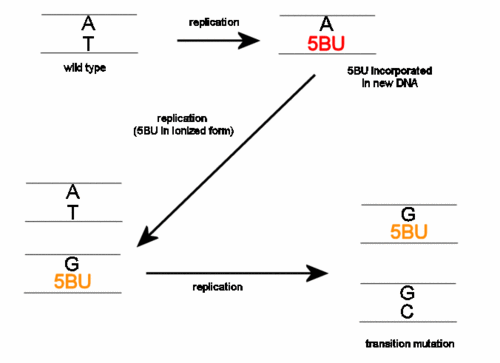Base analog
From Wikipedia, the free encyclopedia
A base analog is a chemical that can substitute for a normal nucleobase in nucleic acids.
One of the more common base analogs is 5-bromouracil (5BU), the abnormal base found in the mutagenic nucleotide analog BrdU. When a nucleotide containing 5-bromouracil is incorporated into the DNA, it is most likely to pair with adenine; however, it can spontaneously shift into another isomer which pairs with a different nucleobase, guanine. If this happens during DNA replication, a guanine will be inserted as the opposite base analog, and in the next DNA replication, that guanine will pair with a cytosine. This results in a change in one base pair of DNA, specifically a transition mutation.

Mutagenesis by 5BU
See also
References
- Griffiths AJ, Wessler SR, Lewontin RC, Gelbart WM, Suzuki DT, Miller JH. Introduction to Genetic Analysis, 8th ed. New York:W.H.Freeman and Co, 2005.
This article is issued from Wikipedia. The text is available under the Creative Commons Attribution/Share Alike; additional terms may apply for the media files.